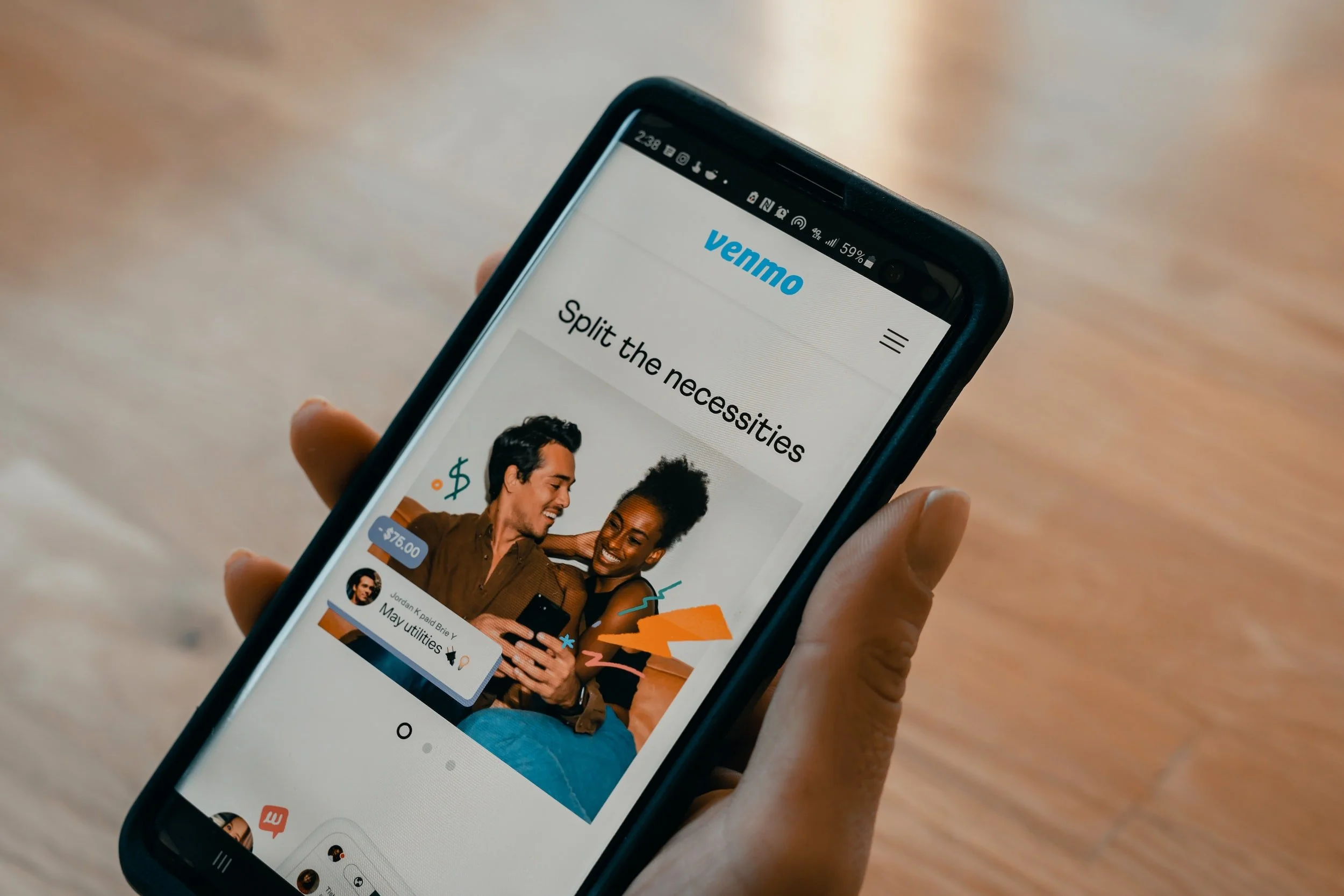Creating a Venmo Charity Profile: Expand Your Nonprofit's Reach and Fundraising Potential
Venmo is a popular app that makes sending and receiving money simple, so you don’t need to use cash or checks. With over 70 million users, it’s a great tool for nonprofits to reach younger donors and boost fundraising. This guide will show you what Venmo is, how it works, how your nonprofit can benefit, and how to get started.
What is Venmo, and Why Do People Use It?
Venmo is a P2P mobile payment app. Users can request, send, and receive payments by linking their bank account, credit, or debit card. Payments can be withdrawn to a bank account or left in the Venmo account. Venmo makes it simple to split costs, send birthday money, or share rent and utilities. It is popular with young users and is often used as a verb (like “Google”), as in, "I'll Venmo you for those fries right now."
What Nonprofits Can Use Venmo For
Nonprofits can use Venmo to reach younger donors and offer more ways to give. However, Venmo only supports one-time payments, so you can’t set up automatic monthly donations. For ongoing gifts, you’ll need to use other fundraising platforms.
The advantages of using Venmo for fundraising include the following:
1. Ease of use: Venmo users often leave money in their accounts, making it more likely for them to donate without hesitation.
2. Appeal to younger demographics: Many Venmo users are millennials and Gen Zers, providing an excellent opportunity to connect with a new generation of donors.
3. Social sharing capabilities: Venmo's social media-style feed displays transactions and comments, inspiring others to donate to your cause.
4. Mobile giving: Venmo is a free and ubiquitous mobile app, making it easy for donors to give on the go.
Remember, a charity profile is linked to just one Venmo account. This can be tricky for bigger teams if several people need access to financial details. Choose one person to manage the account and set up a simple process for sharing information within your team. To manage access more effectively, consider using shared credentials securely through a password manager, which can ensure that sensitive information is kept private. Additionally, designate backup contacts who can access the account if the main person is unavailable. This can help prevent bottlenecks and confusion.
How to Set Up Venmo for Nonprofits
Step 1: Confirm Your Charity Status with PayPal
To create a Venmo charity profile, your organization must first confirm its charity status with PayPal, Venmo's parent company. If you don’t have a PayPal account, start by creating a PayPal Business account for your charity. Then, follow the steps to confirm your charity status.
Step 2: Get Started with Venmo
Once your charity status is confirmed with PayPal, head to PayPal's Business Tools page for charity profiles or search for Venmo in your Business Tools. Then, click "Get Started" to begin creating your Venmo charity profile.
Step 3: Sign Up for a Venmo Account
If you're new to Venmo, sign up for an account by entering and verifying your mobile phone number. Next, choose your account's email address and password, and agree to Venmo’s terms and conditions.
Step 4: Create Your Venmo Charity Profile
Venmo will gather your information from PayPal to start creating your charity profile. You'll need to:
Enter a username, description, category, and keywords to help donors find your charity profile.
Provide your contact information, social media links, and website links (if applicable).
Preview your charity profile and tap “Publish” when you're ready.
How to Successfully Use Your Venmo Charity Profile
Now that you're set up, it's time to share the news! Simply having a profile isn't enough; you need to integrate it into your fundraising activities. Here are some proven tips to make the most of your Venmo Charity Profile:
Make Your QR Code a Centerpiece: Venmo makes it incredibly easy for people to donate in person with a unique QR code. Use it everywhere! Print it on flyers and banners for your fundraising events, include it in your direct mail pieces, and feature it on your website. Venmo also provides QR Code Kits with stickers and tabletop displays to make it even easier.
Guide Your Donors: Don't assume your supporters know how to donate to a charity on Venmo. Create a simple "How-to-Donate" guide with screenshots or a short video. Share this on social media and in your email newsletters to remove any friction from the giving process.
Get Social on the Feed: Venmo is a social platform at its core. When a supporter makes a public donation, be sure to thank them in the comments! This small act of stewardship not only makes your donor feel appreciated but also makes your organization visible to their entire network. Encourage your supporters to share their donations on their feed to amplify your reach.
Promote Your Handle Everywhere: Just like you share your website and social media handles, make your Venmo username a standard part of your marketing. Add it to your social media bios, email signatures, and website footer so your community knows they have a quick and easy way to support you.
Explore In-App Discovery: Encourage your supporters to find you directly within the Venmo app! Users can now search for charities, browse by category, and even see trending nonprofits through the "Make a Donation" feature in the search bar. This is a powerful way to reach new donors who are already looking for causes to support.
What Are the Benefits of a Venmo Charity Profile?
Creating a Venmo charity profile comes with some great benefits, including:
A blue checkmark badge to show donors that your charity is verified.
Increased visibility with enhanced and shareable posts from donors.
Low transaction fees of 1.9% + $0.10 per donation received.
Donation history and account statements, complete with donor contact information.
Same-day access to funds from donations (fees apply).
A separate wallet for personal payments and transactions.
Photo gallery to help tell your charity’s story.
QR code and QR Kits for collecting touch-free donations in person.
Privacy and Data Sharing
When you create a Venmo charity profile and connect your PayPal account, you allow Venmo to collect information about you and your charity. This includes personal information (Full name, Email, Account verification status, and PayPal ID) and charity information (Business Address, Business Category, Business Email, Business Name, Business Owners, Business Registration Information, Business Type, Business Subcategory, and Tax Identifier). Venmo uses encryption and other security measures to protect this data from unauthorized access. But you should also regularly update your passwords (much easier to do using an organization-wide password manager), use multi-factor authentication, and limit account access to essential personnel only. For more information, read PayPal’s Privacy Policy and Venmo’s Privacy Policy.
Wrapping Up
Venmo charges fees for transactions made to nonprofit charity profiles. The fees are 1.9% + $0.10 per transaction, which are deducted automatically from each donation. However, Venmo does not give donors the option to cover these transaction fees.
When comparing Venmo to other fundraising platforms, remember that many platforms offer various pricing structures, including processing fees and platform fees. Some platforms may offer lower transaction fees or even allow donors to cover the fees, resulting in more money going directly to your nonprofit.
Venmo can be a valuable addition to your nonprofit's fundraising strategy, especially when used in combination with other payment methods and fundraising platforms. By leveraging Venmo's popularity and convenience, your organization can reach a younger donor base and enhance its fundraising efforts. To integrate Venmo effectively, consider using it alongside event registration services, allowing attendees to pay conveniently through the app. Additionally, incorporate Venmo into your online donation forms as a payment option, ensuring a seamless experience for donors who prefer multiple payment methods. By combining Venmo with other platforms, your nonprofit can offer a versatile and engaging giving experience that appeals to a wide range of supporters.
Want to learn more? Check out Venmo’s Charity Profile Set-Up Guide and their FAQs for their most up-to-date information. Happy fundraising!





